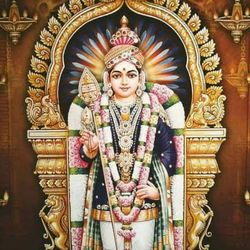

Dasara, written and directed by debutant Srikanth Odela, takes a risk that traditional Telugu films rarely do. It attempts to be a "massy" Telugu movie that tackles the harsh caste politics in a fictionalised tale set in the Telangana village of Veerlapally with sincerity, and it manages to strike a reasonable balance in this regard. Undoubtedly one of Dasara's highlights is an eerie pre-intermission segment. The events revolve around the three main characters, Dharani (Nani), Vennela (Keerthy Suresh), and Suri (Deekshit Shetty). There is no room for swagger or machismo to be displayed. I briefly considered whether the terrifying incident on which Srikanth had based his semi-fictional account was a true one.
First, let's address the obvious: Dasara is not a pretend Pushpa or KGF. Instead, it attempts to emulate the gritty quality of Tamil films like Jai Bhim, Asuran, and Karnan in its representation of power relationships. Dasara also occupies a space reminiscent of Rangasthalam, one of the few notable contemporary "massy" Telugu movies that addressed caste issues.
It takes some getting used to the world of Dasara, where drinking excessive amounts of alcohol is a way of life and a means of escaping the absurdity of the daily grind. The single bar in the village called "Silk bar" is the centre of life for the guys there. Srikanth salutes the seductive Silk Smitha.
The bar is the place where the laws of power are made clear. While the lower caste men remain outside, the upper caste guys drink inside the pub. The undercurrent of the power relations in the hamlet is a backdrop of disputes among a wealthy family involving the characters portrayed by Saikumar and Samuthirakani and later Shine Tom Chacko. The three childhood pals Dharani, Suri, and Vennela are positioned in this environment by Srikanth. The metaphors in their names, which represent the earth, sun, and moon, are representations of their personalities and connections.
Through its many characters, Avinash Kolla's production design, Sathyan Sooryan's stunning frames in brown-black, earthy brownish-reds, and the clever use of oil lanterns, as well as Santhosh Narayanan's rustic-meets-jazzy haunting musical score, the movie draws us into Veerlapally that is painstakingly built. Keep an eye on the score during the cricket game that turns out to be a clash of the castes. Additionally, the songs that reflect the regional cultural ethos and the dialect used in rural Telangana deepen the film's sense of place.


